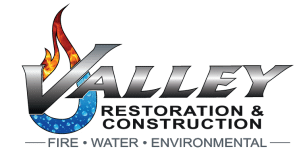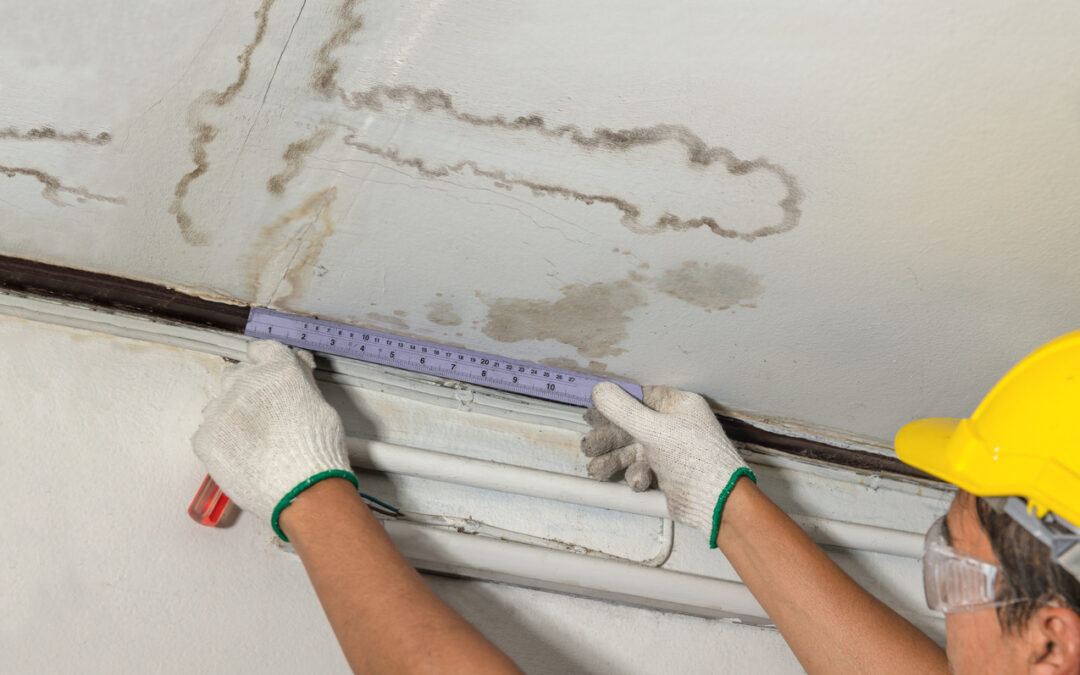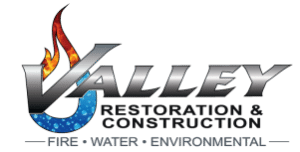Water stains can be a nuisance, detracting from the appeal of your sleek glass windows, sparkling kitchen sinks, and delicate fabric on your furniture. Understanding how these unattractive markings appear and the correct removal methods can turn a stressful chore into a rewarding task with shining results.
We are here to help you effectively remove water stains from any surface. Our guide will provide the knowledge and resources needed to restore the original state of any impacted materials in your home and ensure they regain their former glory.
What Are Water Stains?
A water stain is often the residue left when water evaporates from a surface. These marks are more than an aesthetic issue; they might indicate prolonged exposure to moisture, which may deteriorate surfaces if left untreated.
Types of Water Stains
Understanding the type of water stain you are dealing with will help you appropriately target your cleaning efforts. Here are the most common water stains:
- Mineral Deposits (Hard Water Stains): These often appear on glass, ceramic, and metal faucets and are caused by the minerals in hard water, such as calcium and magnesium. As water evaporates, it leaves chalky white patches requiring specific treatment methods.
- Rings and Spots on Wood: These arise when moisture absorbs into unfinished wood or breaches the finish of sealed wood. They might range from minor discoloration to black circles.
- Mold-Like Water Stains: These gray or black patches, commonly found in wet locations such as bathrooms and kitchens, indicate mold growth caused by excessive moisture and humidity exposure.
By distinguishing between these various forms of water stains, you will be better able to select the most effective cleaning solutions and tactics for each circumstance. Determining the type of stain your materials have lays the groundwork for their effective restoration, outlined later in this guide.
Essential Tools and Ingredients for Removing Water Stains
Having the correct equipment and products on hand can make removing water stains more manageable. Here, we will discuss several critical products for effectively addressing these stains on various materials.
Vinegar, Baking Soda and Hydrogen Peroxide
Vinegar, baking soda, and hydrogen peroxide are everyday household items that combat water stains.
- Vinegar: A versatile acid capable of dissolving mineral deposits from hard water. Using vinegar to remove hard water stains produces sparkling results without harsh chemicals. This method benefits appliances like kettles and coffee machines, where you wish to avoid toxic residues.
- Baking Soda: Baking soda, known for its mild abrasive characteristics, is effective at removing harder stains or those left untreated for an extended period. It’s a delicate but effective cleaning product that eliminates accumulated debris without scratching surfaces.
- Hydrogen Peroxide: With disinfectant capabilities, hydrogen peroxide is an excellent choice for cleaning areas impacted by water stains while also successfully lighting darker spots.
To use these items effectively, create solutions or pastes, apply them to the stained area, and let them work before wiping or scrubbing away. When properly mixed, these agents clean and help prevent further stains by modifying the pH level of the surface to which they’re applied.
Professional Products Worth Considering
While everyday household products serve well in many cases, certain situations may require something more substantial or tailored to specific materials. Here are a few professional-grade products worth considering if persistent stains resist home remedies:
- Calcium, Lime & Rust Remover (CLR): This product tackles heavier build-ups on faucets and tiles; CLR works where regular acids might not suffice.
- Water Stain Remover Pastes: Specialized pastes created specifically for stubborn glass or ceramic water spots can be very successful when vinegar may fall short.
- Oxygen Bleach Powders: Non-chlorine bleach solutions safely clean large areas contaminated with moldy water residues without harming colored grouts or sealants.
Choosing between homemade mixtures and store-bought cleaners is mainly determined by the severity of the stain and the material treated. Both approaches should prioritize safety by ensuring adequate ventilation for chemical cleaners and aim for success against specific stains in your environment.
Removing Hard Water Stains From Various Surfaces
Removing hard water stains in your home might be difficult. However, you may successfully restore surfaces and materials with the correct procedures and products. The following are detailed ways to remove hard water stains from many different surfaces throughout your home.
Glass & Mirrors: Combining Vinegar and Lemon Juice for Sparkling Results
Glass and mirrors often suffer most visibly from hard water build-up, which can obscure clarity and detract from their shine. To tackle this:
- Mix equal portions of white vinegar and lemon juice in a spray bottle.
- Apply generously to the affected glass or mirror.
- Let the solution sit for five to ten minutes to dissolve minerals.
- Wipe the solution away with a microfiber cloth or squeegee for streak-free results.
This simple yet powerful combination leverages acidity to break down mineral deposits, efficiently eliminating hard water stains.
Shower Walls & Tiles: Scrubbing With Baking Soda
Baking soda is an effective product for hard water stains on tiles and shower walls.
- Make a paste of three parts baking soda and one part water.
- Apply it directly onto the stains using a sponge or soft brush.
- Scrub gently in circles until you see improvement.
- Rinse thoroughly with warm water, followed by drying to prevent further staining.
Baking soda cleans surfaces and neutralizes odors, making it perfect for bathroom restoration.
Toilet Bowls: Using Hydrochloric Acid Safely for Stubborn Stains
Toilet bowls often host some of the most challenging hard water marks due to constant exposure to moisture:
- Carefully pour 10% hydrochloric (muriatic acid) into the toilet bowl. Use necessary safety precautions, such as gloves and goggles, during application.
- Allow it to act for about 30 minutes.
- Brush vigorously using a toilet brush, then flush multiple times until all traces of acid are gone.
Always ensure good ventilation when working with strong acids like hydrochloric acid in confined spaces such as bathrooms.
Sink Basins & Faucets: A Mixture of Vinegar and Water for Shiny Fixtures
Faucets and sinks frequently accumulate spots from hard water:
- Prepare a solution of half white vinegar and half warm water.
- Soak a rag in this mixture and apply it extensively over the stained area. Use rubber bands or cling wrap to hold rags in place on curves or vertical surfaces.
- Let the rag sit for an hour before wiping it off, then buff dry with a soft towel.
This mild acidic action helps dissolve layers of limescale without damaging fixture finishes.
Clean Solutions for Upholstery and Carpet Spots: A Vinegar and Baking Soda Fusion for Flawless Results
Water stains on upholstery and carpet can be stubborn to remove:
- Sprinkle baking soda generously over the water-stained area and let it sit for 15-20 minutes to absorb moisture and loosen the stain.
- Mix equal parts white vinegar and warm water in a spray bottle.
- Spritz the stained area with the vinegar solution until thoroughly dampened.
- Blot the area with a clean cloth or sponge to lift the water stain, avoiding harsh rubbing to prevent damage to the fabric.
- Allow the upholstery or carpet to dry thoroughly, then vacuum to remove any remaining residue.
This potent vinegar and baking soda blend effectively combats water stains on upholstery and carpet, leaving them fresh and restored.
Specific Remedies for Wooden Surfaces: White and Dark Stains
Wooden surfaces may encounter both white and dark stains, each requiring a different approach:
For White Stains:
- Mix equal parts vinegar and olive oil to create a solution.
- Apply the mixture to the white stain using a soft cloth, rubbing it gently into the wood grain.
- Let it sit for a few minutes, then wipe off the excess with a clean cloth.
- Repeat until the white stain fades, then buff the wood to restore its shine.
For Dark Stains:
- Create a paste by combining baking soda and water.
- Apply the paste to the dark stain, spreading it evenly over the affected area.
- Allow the paste to sit for several hours or overnight to penetrate the wood and lift the stain.
- Wipe away the paste with a damp cloth, then dry the wood thoroughly.
- If the stain persists, consider using a commercial wood stain remover following the manufacturer’s instructions.
Utilizing these targeted remedies can effectively address white and dark stains on your wooden surfaces, restoring their natural beauty with ease.
When to Seek Professional Help With Water Stains
Addressing water stains on your own may be a rewarding experience, allowing you to keep your home in pristine condition. However, there are times when DIY solutions are inadequate and professional assistance is required. Identifying these conditions will save you time and money on deteriorating materials or deep-set stains.
Signs That DIY Methods Are Not Enough
Recognizing when to call in professionals can help prevent long-term damage from water stains. Here are several indicators that your situation might require more advanced solutions:
- Persistence of Stains: If you’ve tried multiple cleaning methods and the water stains stubbornly remain, it might indicate an underlying issue that surface treatments can’t address.
- Size and Scope: Large areas affected by water stains or multiple locations throughout your home may suggest a bigger problem. There could be systemic issues within your plumbing or waterproofing.
- Damage to Materials: When materials such as hardwood floors or drywall begin to show warping, swelling, or discoloration in addition to surface stains, this indicates underlying damage that visual cleaning will not resolve.
- Health Concerns: Recurrent mold formation around water stains could pose health risks. Mold thrives in moist environments and can signify excess moisture within materials, necessitating professional mold remediation.
Working With Valley Restoration
Hiring a professional restoration company is essential when water stains persist. Valley Restoration cleans and restores homes efficiently throughout the Colorado Western Slope. With years of experience and specialized knowledge, we employ tailored techniques to address all water-related damages. Utilizing cutting-edge technology and equipment, our team ensures thorough restoration without compromising the integrity of your property.
Valley Restoration also conducts assessments to identify underlying issues such as structural damage or persistent leaks, providing holistic solutions to prevent future problems. Renowned for our prompt response to emergencies, we prioritize swift action to minimize damage and restore your peace of mind. Don’t let water stains linger—contact Valley Restoration today for efficient and reliable assistance.


